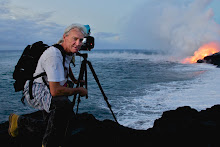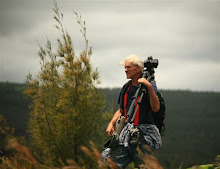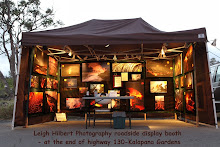
(Today’s photo above showing this morning’s volcanic haze, or vog)
Yesterday, late afternoon out at the lava viewing area started out mellow… Muggy without our Trade winds… Then heavy rain began to fall. This did not dissuade hundreds of visitors from continuing out on the trail to witness lava entering the sea; some with umbrellas, some with cheap rain ponchos, many others in wet shirts but still smiling, “It’s Hawaii!” they would call out. Then about 7:30 PM, a time when most visitors have walked the ¾ mile lava trail to the viewing area, heavier rains came down, followed shortly by massive lightning flashes and booming thunder. Simultaneously, strong gusts of wind from the west blasted, and that changed the massive, and heavily toxic lava plume to quickly switch directions laying it down over the large crowd of people out there. That is when Civil Defense personnel got on their blow horns and told everyone gathered to leave immediately.
The crowds, now breathing in some sulfur dioxide and soaking wet, still had to walk the same raw pahoehoe lava path, now in dark of a storm, back to reach the parking area as the lightning continued flashing, accompanied by strong gusts and heavy rains. I watched them parade by; some wondering how much danger they were in;
what exactly was the danger?: “Was it the lightning? Or the toxic fumes? Or was there molten lava coming down close by?” Yet in the chaos, some were trying to purchase items from vendors, vendors who were madly holding down, or dismantling flapping & wet display canopies; comical scene altogether. ---- Not long after everyone drove away, the storm stopped as suddenly as it had begun and it was back to calm & muggy and the viewing area was closed, and the lava kept quietly flowing and glowing red in the distance.
Lava flowDespite the intense deflation recorded by the Kilauea Volcano summit tiltmeters, as I reported on yesterday, the lava flowing out on the mountainside and into the sea was surprisingly pretty strong. Inflation has once again started tweaking back up, but it will take part of a day to re-pressurize the lava tube plumbing system.
Sweet surfable waves are rolling onto the southeast shore steadily at around two to four feet and glassy conditions.



























































